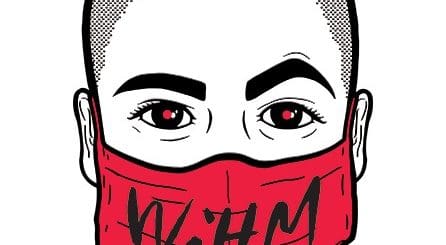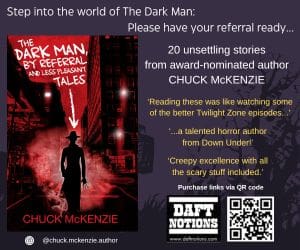The Hammerlock of the Gods – Pro Wrestling and Horror – Hardcore wrestling and the slasher film
 Hardcore wrestling and the slasher film
Hardcore wrestling and the slasher film
At the risk of going out on a limb and providing a satirical allusion, a link can also be drawn between the slasher sub-genre of horror cinema and what is colloquially known as hardcore, garbage wrestling, or death matches. The latter is a sub-genre of wrestling which exists on the periphery of the sport, being considered too violent for mainstream television, and with good reason.
Hardcore wrestling is a particularly violent form of the grap game, in which the match itself is accentuated by a number of dangerous props, usually in the guise of exploding rings, barbed wire laden baseball bats, ring ropes or tables, glass plates, steel chairs, thumb tacks, staple-guns, light tubes, fireballs, knives, scissors, kendo sticks, baking dishes, chairs, or a combination of some or all of the above. Fire is sometimes presented in the guise of flaming torches used as weapons, or the ring ropes or ring surrounds being set on fire. Proffering bouts like the infamous no rope exploding barbwire timebomb deathmatch, true hardcore wrestling leaves little to the imagination.
Obviously, this subset of wrestling is not for everyone, and there are a handful of wrestlers who specialised in these types of matches through their careers. Some who come to mind are John Danzig and his CZW promotion, Atsushi Onita and FMW in Japan, Nick Gage, Paul Heyman’s ECW, Bruiser Brody, Necrobutcher, Abdullah the Butcher, the original Sheikh, New Jack, Sandman, Sabu, Big Van Vader, Terry Funk and Mankind/Cactus Jack/Mick Foley. The latter wrestler brought this form of wrestling mainstream, albeit in a rather safer guise. Though he still took an awful lot of punishment. For example, Foley is famous for having his ear torn off in the middle of a match when he got his head caught in the ring ropes and was ejected a little too forcefully. He also once allowed the Undertaker to throw him off the roof of a steel cage sixteen feet down onto a table. He proceeded to get up off the stretcher carting him away, climb back on top of the cage, where the Undertaker then choke-slammed him through the roof of the cage down to the canvas, where he knocked out a few teeth.
The audience drawn to these type of matches is not unlike the type drawn to a slasher film. They go because they crave blood and they want to see slaughter and broken bleeding bodies. The unkillable monster of the slasher film, Mike Myers, Jason Vorhees, Freddy Krueger, sees his kindred in the barbed wire bat wielding maniac who triumphs in the hardcore wrestling match. The monster wrestler does not seek to obtain the traditional one-two-three pin and cleanly win his match. Rather, he exists to inflict pain and suffering on his opponent. He desires to see the broken bloody body of his vanquished foe lying in a heap in the ring, or on the arena floor. Preferably cut, maimed and disfigured beyond recognition. For example, New Jack, an unrelenting psychopathic individual, once went in so hard on a teenage rookie wrestler named Eric Kulas with a razor blade to the forehead (a classic blading technique when done right), that the young man lost copious amounts of blood and almost died in the ring. Staying true to character, New Jack refused to show any remorse after the shocking attack. It is perhaps unsurprising that the performer behind this character, Jerome Young, came from a violent background and had several run ins with authority in his life outside the ring.
I should mention the concept of blading here. The use of blood in pro wrestling to rile up the crowd was a technique used across the globe until recent times when a more politically correct, family friendly attitude was adopted across the sport. Almost always pre-determined by the company and the two wrestlers involved, one or both would begin the match with a sliver of razor blade taped up under a wristband. At a certain point of the match, when a heavy blow to the head has been accentuated and talked up by the commentators, the beaten down wrestler will fall on to his belly in the corner of the ring, or preferably down on the arena floor close to the ring.
While the other wrestler and the referee set up a distraction, the fallen wrestler deftly removes the sliver of blade and draws it across his forehead, where the skin is thinnest. This gives the stunning visual effect of blood streaming down the face, thus inciting the crowd to either scream for revenge, or hunger for more blood. Most wrestlers who blade are quite experienced at the job and know exactly where to cut, and how not to cut too deep, unlike New Jack.
If you are aware of this technique and watch carefully, you might catch a wrestler blading, and observe him toss the blade aside as he moves toward his opponent, where it is deftly picked up and pocketed by the referee, and missed by the crowd, who are absorbed once more in the conflict.
There is a correlation between the weapons wielded to draw blood by wrestling heels and those employed to even more gruesome effect by the monsters of horror. Similarly, the two genres share some of the same locales. Wrestling’s, boiler room, dungeon of doom, house of horrors, buried alive, graveyard and boneyard matches are the equivalent of the abandoned cabin in the woods, or the basement into which our archetypal horror monster pursues and despatches a score of over-sexed teenagers.
As well as borrowing the cliched horror locales, wrestling also borrows some of the monstrous characters from the horror genre to populate the dark locales. Undead monsters like the Undertaker, the demonic fire dealing Kane, the insane Mankind, the backwoods cult leader Bray Wyatt and his Hell spawn alter ego, the Fiend. It is also worth noting that the WWE launched its own studio in 2002, creating films which utilised its own roster of wrestlers alongside traditional Hollywood actors. Naturally, they dipped their toe in the horror genre. Kane appeared as the lead monster in See No Evil (2006) and a sequel (2014) while former world champion Dave Bautista (Batista) segued into mainstream movies and appeared in the 2021 zombie film, Army of the Dead.
- About the Author
- Latest Posts
Anthony Ferguson is an author and editor living in Perth, Australia. He has published over seventy short stories and non-fiction articles in Australia, Britain and the United States. He wrote the novel Protégé, the non-fiction books, The Sex Doll: A History, and Murder Down Under, edited the short-story collection Devil Dolls and Duplicates in Australian Horror and coedited the award-nominated Midnight Echo #12. He is a committee member of the Australasian Horror Writers Association (AHWA), and a submissions editor for Andromeda Spaceways Magazine (ASM). He won the Australian Shadows Award for Short Fiction in 2020.











